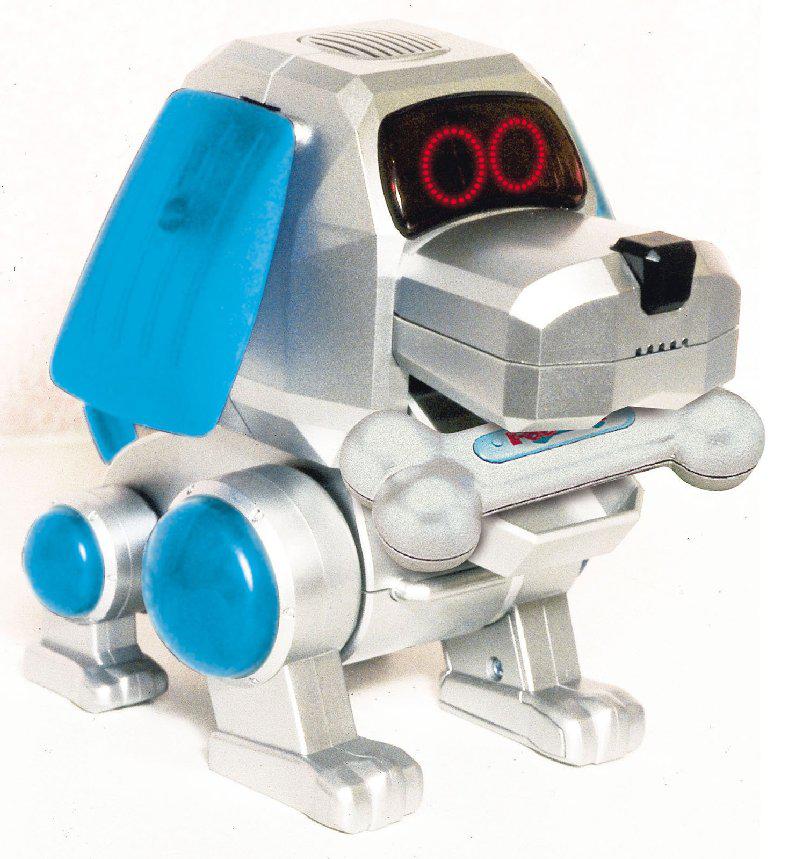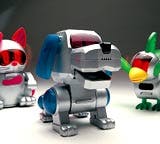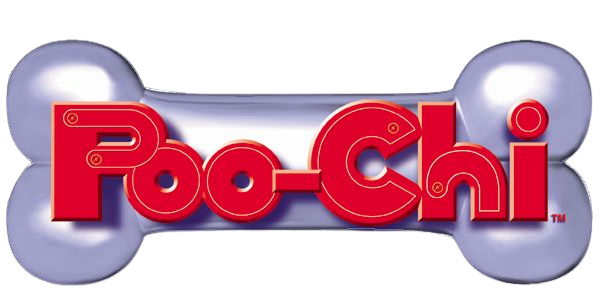
Notice: For those that are new here, this website is unfinished.
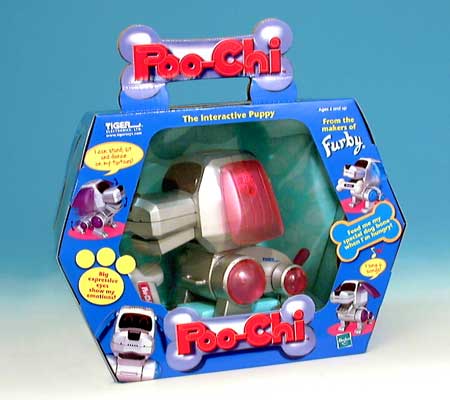
Poo-Chi (プーチ in Japanese) is an interactive robot dog from Sega Toys that was first launched in Japan on the 1st of April, 2000. It is the first member of the Kokorobo Series by Sega Toys and the Robo-Chi Pets line by Tiger Electronics. The toy was launched by Tiger Electronics in New York City at FAO Schwarz on the 19th of April, with an event at FAO promoting the launch that day. According to Tiger's website, Poo-Chi became available from stores nationwide on the first of May in 2000.
Poo-Chi requires 3 AAA batteries to be installed at the back of his head, and Poo-Chi's patent credits Mie Ueda and Tomohiko Onishi as Poo-Chi's inventors.
Important: While various sources state Samuel James Lloyd and Matt Lucas created Poo-Chi, there is no evidence to support this claim.
Features
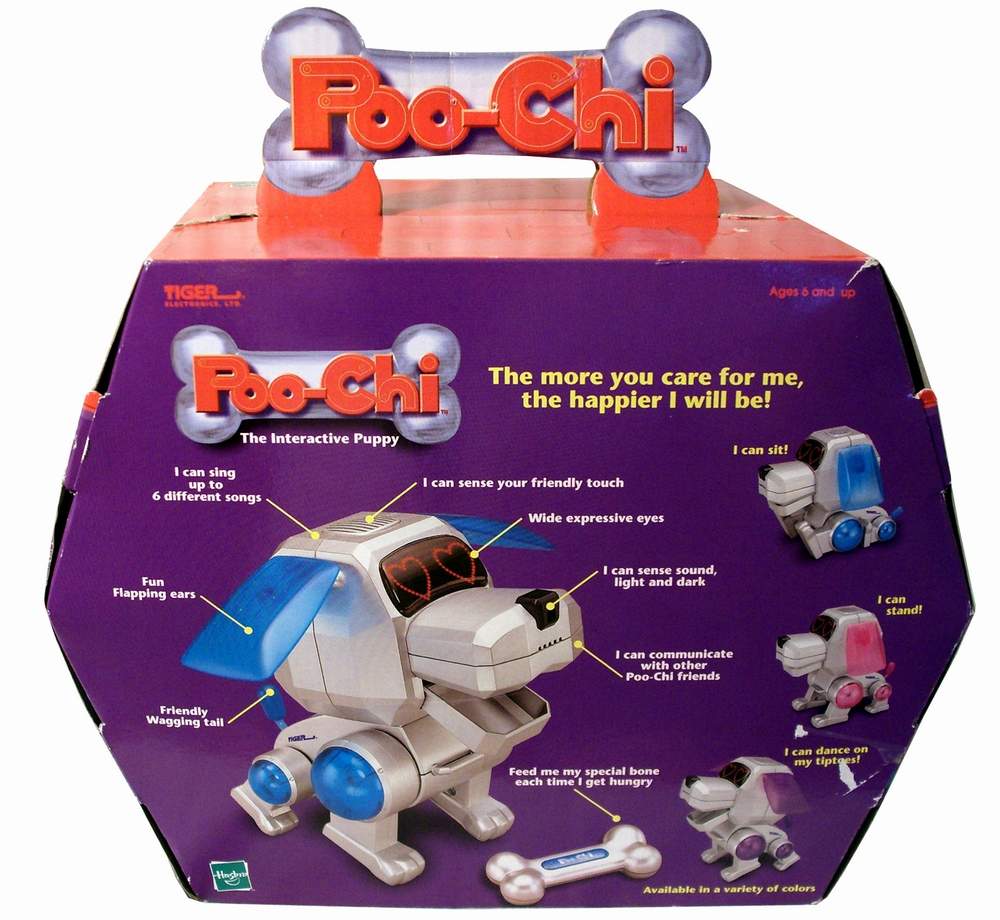
Expressions & Sensors
Poo-Chi has a sound sensor, a light sensor, a magnetic sensor, and a button on his head that he can react to when it's pressed. You can also use the button on his head to select a song you want him to sing. The magnetic sensor allows him to react when you hold the bone to his mouth, in attempt to wake him up or feed him.
Poo-Chi's eyes light up red, and can display three types of expressions. When happy, he will have hearts in his eyes, and when he is sad, his eyes will be partially open. He can also blink his eyes.
American Poo-Chis have an IR port, allowing them to communicate with each other and other Robo-Chi members, but most Japanese Poo-Chis do not have this feature, neither do they come with a bone to feed them. All Japanese Super Poo-Chis are equipped with these two features, though.
Poo-Chi's light and sound sensors are in his muzzle, and he responds when you suddenly block his light sensor and then uncover it.
Poo-Chi's Biorhythm
According to the manual, Poo-Chi has eight biorhythmic levels, each of which last for half an hour, and affect how Poo-Chi is feeling. In the first level, Poo-Chi is mostly unhappy and displays sad eyes in his visor, but at level eight, he is happy most of the time.
Movements
Poo-Chi is capable of sitting or standing in one spot. While standing, he can flap his ears, wag his tail, lean forward on all four legs, and open and close his mouth.
Songs
English Version
To get Poo-Chi to play a song, cover Poo-Chi's snout with your hand, and press the head button five times within two seconds. When Poo-Chi sits and you hear three beeps, you should press the head button the number of times that correspond to the song you want to hear Poo-Chi sing.
The Japanese version of Poo-Chi plays four songs that the English version does not play.
| Poo-Chi Song List (English Version) | ||||
|---|---|---|---|---|
| Number of Presses | Song Name | |||
| 1 | Wedding March | |||
| 2 | Camptown Races | |||
| 3 | Bingo | |||
| 4 | I've Been Working on the Railroad | |||
| 5 | Beethoven No. 9 (Ode to Joy) | |||
| 6 | When the Saints go Marching In | |||
Tiger's version of the Christmas Poo-Chi plays "Deck the Halls" and "Jingle Bells", replacing "Wedding March" and "When the Saints Go Marching In". I don't know if the other Christmas Poo-Chis play Christmas tunes.
Japanese Version
Most of the song names are from the description, and one was from Furby Rocker's comment on the video. The third song is "Oshogatsu", a traditional New Year's song, according to a page from the official Poo-Chi Encyclopedia (プーチ大百科); I don't own the book to provide scans of it, I saw a page from a listing mentioning the song name.
| Poo-Chi Song List (Japanese Version) | ||||
|---|---|---|---|---|
| Number of Presses | Song Name | |||
| 1 | Wedding March | |||
| 2 | Jingle Bells | |||
| 3 | Oshogatsu | |||
| 4 | Hallelujah chorus | |||
| 5 | Beethoven No. 9 (Ode to Joy) | |||
| 6 | Mozart: Eine Kleine Nachtmusik | |||
Popularity
Important: An article from e-marketing.fr that was published on the 1st of June, 2001 and stated that 10 million units had been sold, mentioned that out of this figure, 75,000 units were sold in France. I don't know if the author of the e-marketing article was informed that 10.16 million were sold in November 2000, as reported by an ASCII article.
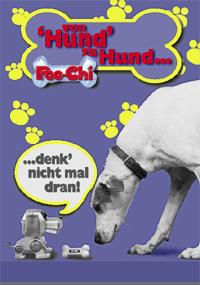
Sega Toys and Tiger had hoped for 1.5 million Poo-Chis to be sold in 2000, according to an ASCII article. But the official Japanese Poo-Chi website mentions Sega Toys expected one million units to be sold.
Poo-Chi was an instant success in Japan; within 3 hours of its launch on the 1st of April, 100,000 units were sold. Poo-Chi was also considered successful in the U.S., as Tiger had sold 1 million units in 2000.
On the 31st of July, 2000, an ASCII article reported that 4 million units had been sold internationally at the time, and 700,000 of those units were sold in Japan. Eventually, 10 million units were sold internationally.
Poo-Chi was referred to as "Poo-Chi Dog" (普奇狗) in China, and was launched there on the 22nd of January, 2001. A Chinese importer for the toy sold more than 1,800 by the end of a week in February, and the price was approximately 400 yuan. At the time a news article reporting these details was published, an interviewee who worked for the company importing Poo-Chis stated that 16 shops were selling Poo-Chi and Meow-Chi (the article with all this info was published on the 19th of February in 2001).
On the 7th of November that year, an ASCII article reported 10.16 million units had been sold globally.
Due to the success of selling more than 10 million units, Sega Toys held a celebration with some of their employees, giving out wine bottles with a Poo-Chi pictured on the front of them, and Poo-Chis wearing a top hat and cape. These Poo-Chis and the bottles were exclusive to the celebration. The celebration occurred on the 8th of November, 2000.
Events & Campaigns
The Japanese release of Poo-Chi appears to have been followed by more promotional campaigns than the U.S. release of Poo-Chi.
For a full list of events and contests, please click here (W.I.P).
U.S. Campaigns
- FAO Schwarz Launch
- McDonalds
- McDonalds (2001)
- Lunchables Tiger Toys Giveaway
- Cap'n Crunch Tiger Toys Giveaway
Japanese Campaigns/Events
- Showa Shell
- Fuji Film
- JAS
- e-hobby
- Mitsui Direct
- McDonalds
Box Versions (Languages)
Here are some photos of different boxes Poo-Chi was sold in, not including boxes used for any limited editions. There's a chance that Poo-Chi was sold in some countries in boxes that do not have their language printed on. Poo-Chi was sold in China, but there is no documentation proving a Chinese version of the box exists.
Poo-Chi was distributed in Italy as "Bau-Chi" and was launched there in September 2000. The exact launch date for the Italian Poo-Chis is unknown.
Poo-Chi was distributed by Sonokong in Korea as "My Friend Poo-Chi" (내친구 푸치), and in Greek, Poo-Chi was officially referred to as "Πού-Κι".
 |
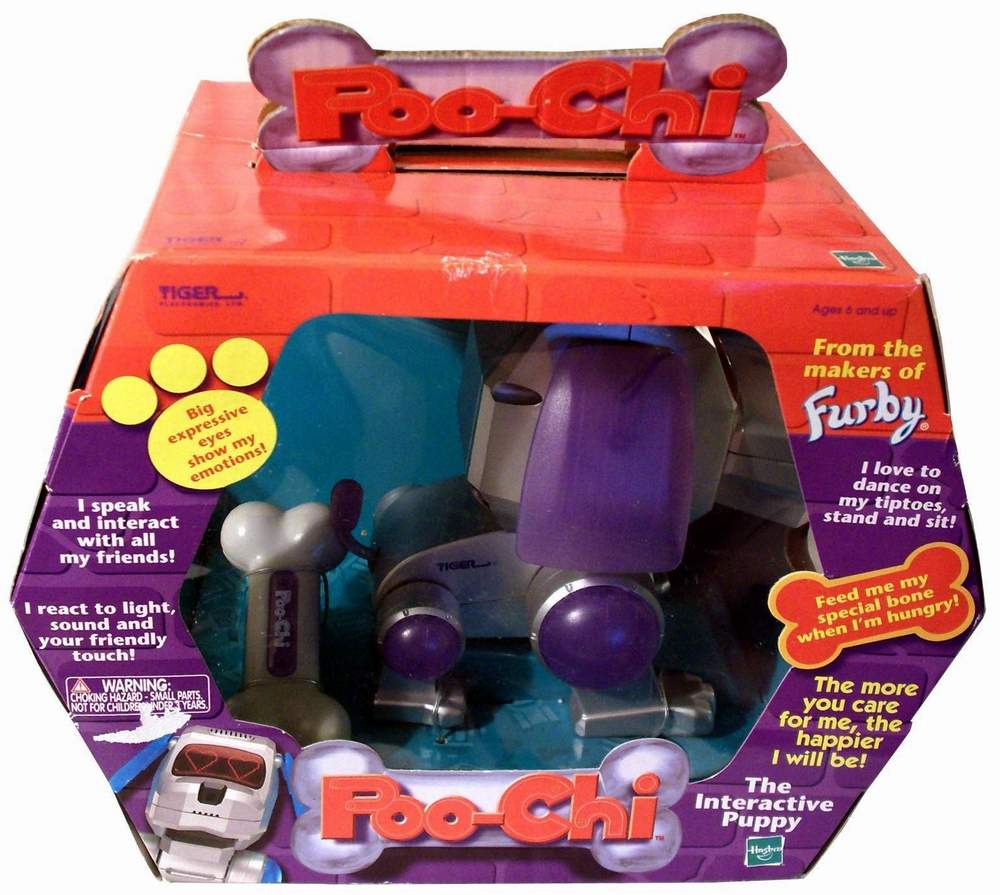 |
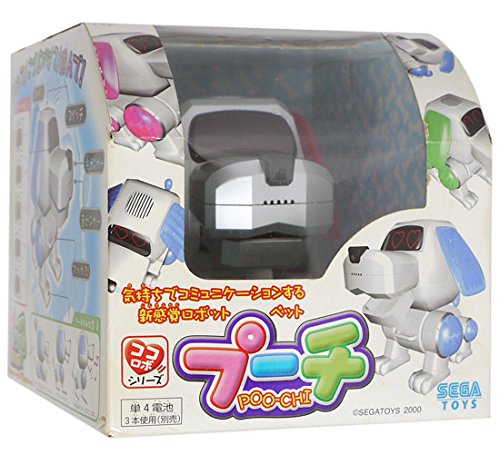 |
| English | English | Japanese |
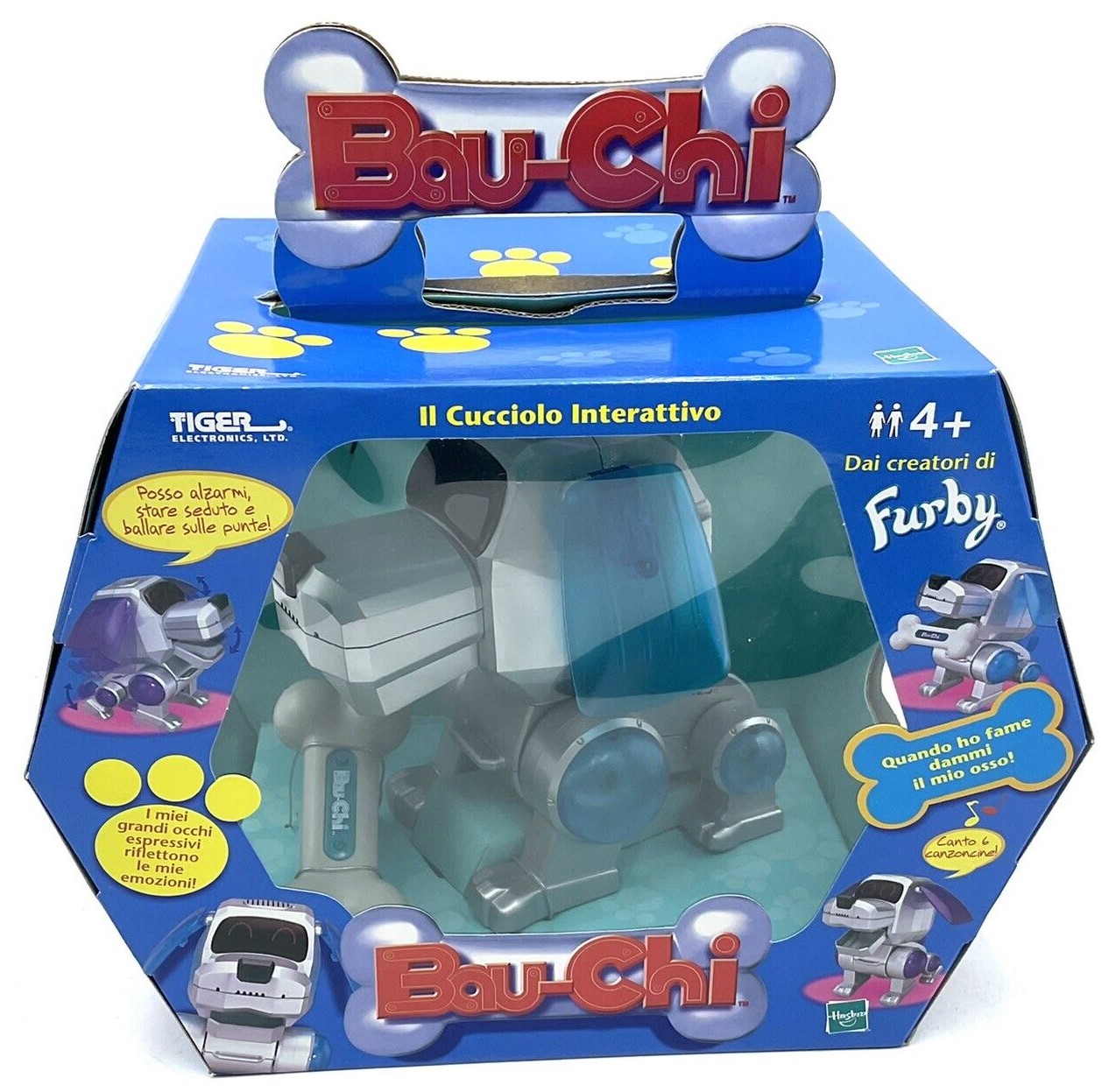 |
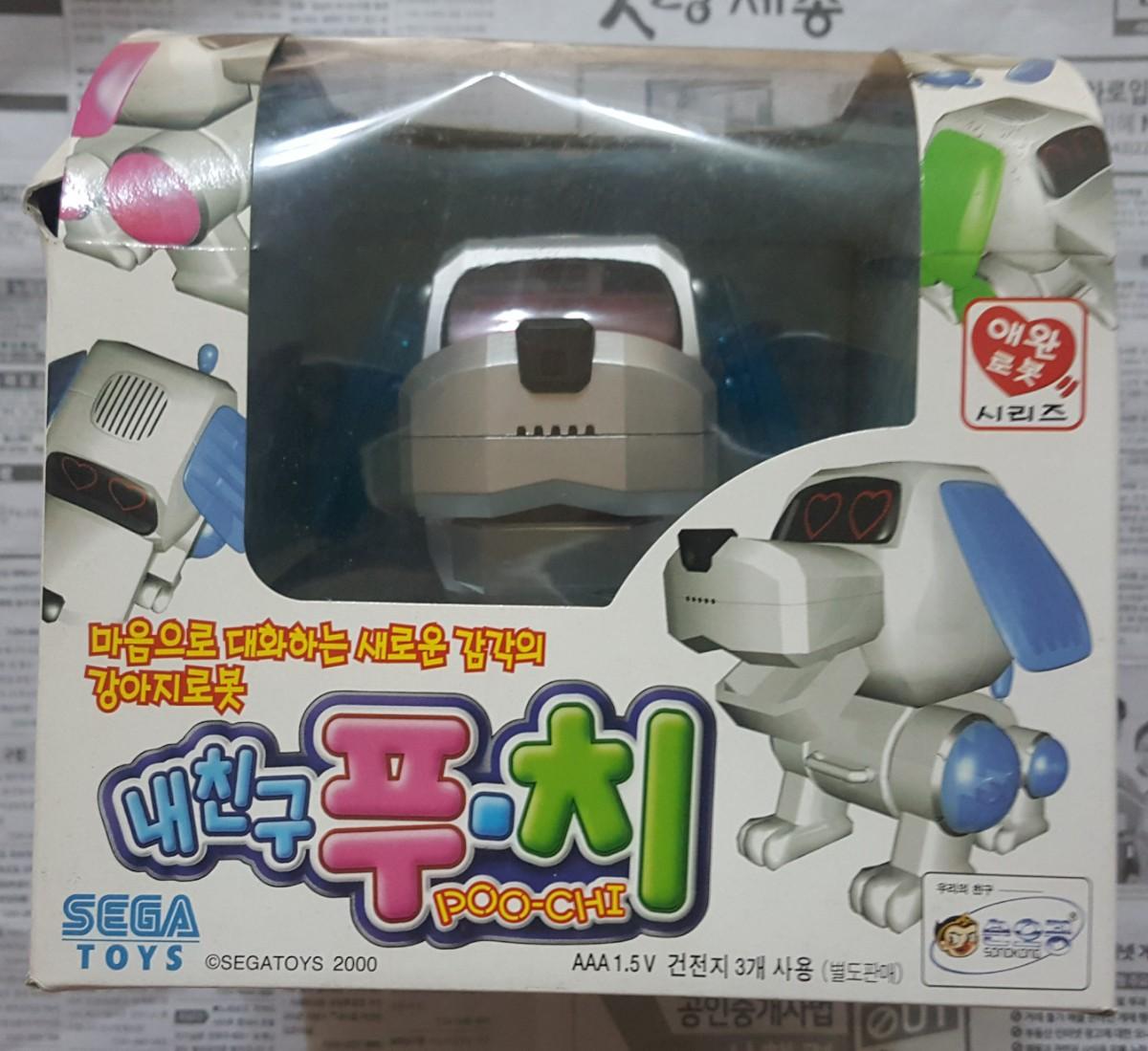 |
|
| Italian | Korean | Greek |
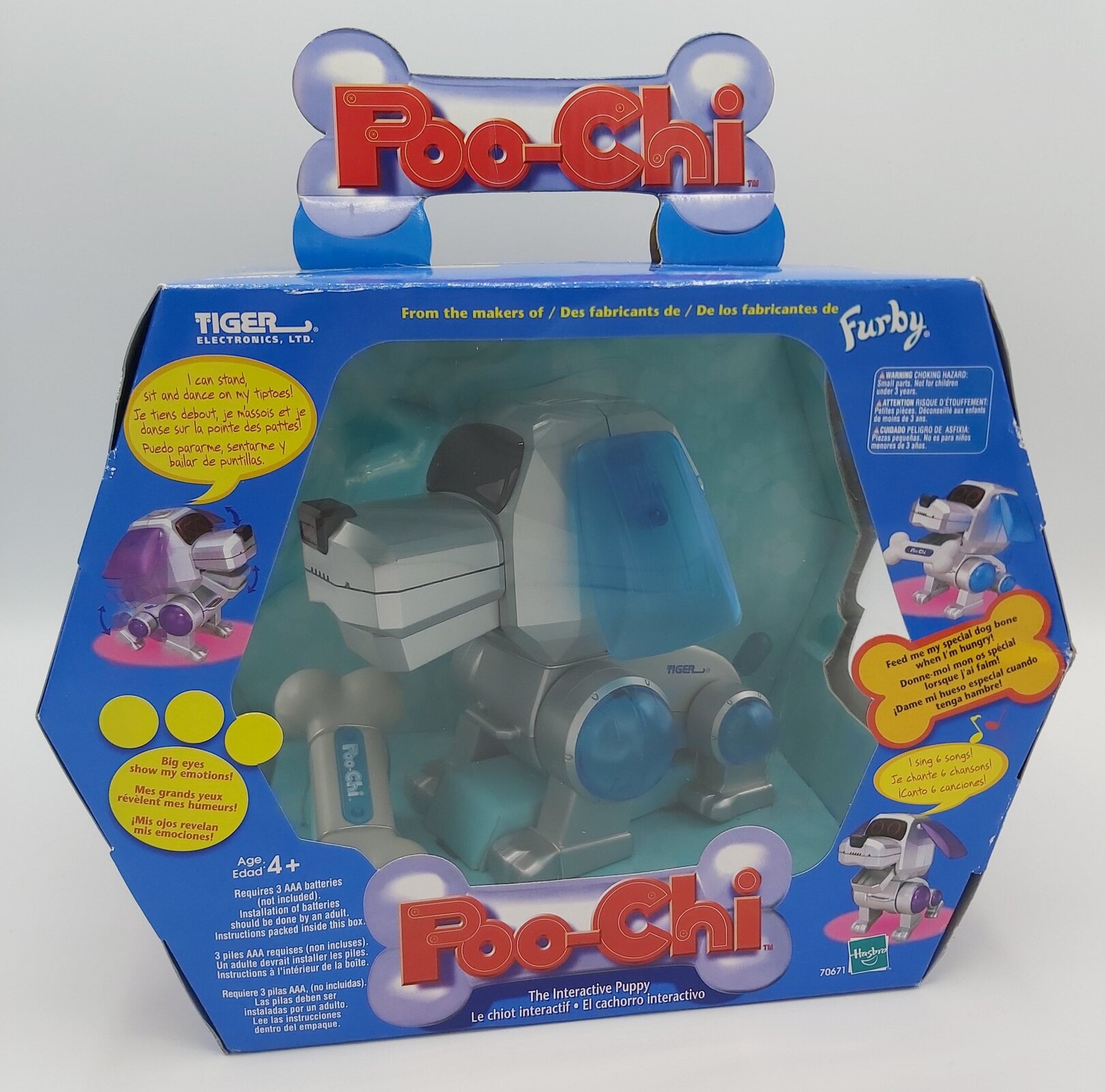 |
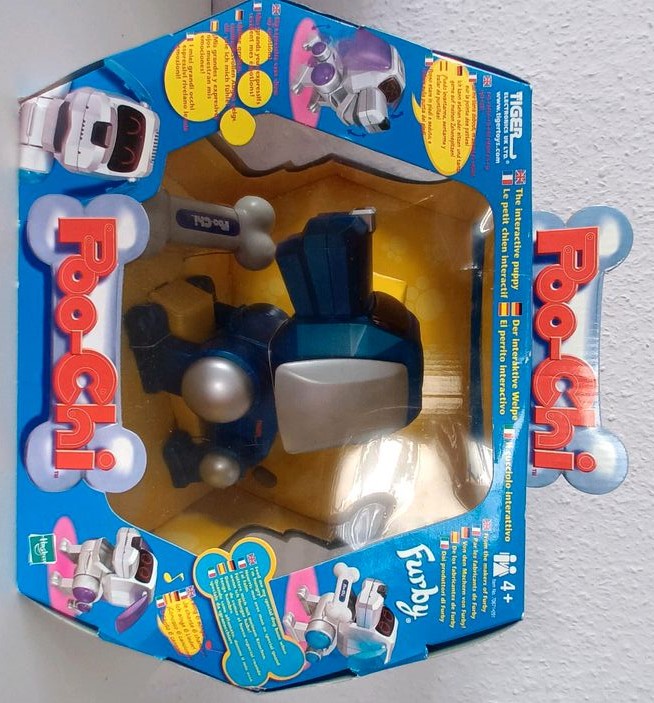 |
|
| English, French, and Spanish | English, German, Italian, French, and Spanish |
Poo-Chi Variants
Super Poo-Chi
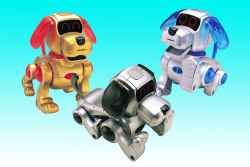
A version of Poo-Chi you can name and vocally give commands to. Super Poo-Chi requires you to train him to recognize certain commands, such as "Paw, "Let's Sing", "Lie Down", and "Sit". You can praise him by saying "Good Dog", or press the 'B' button on his chest, as a way of saying "Bad Dog". Super Poo-Chi has three developmental stages, including baby, puppy, and adult, but depending on how you train him, he may become a faithful dog, a talented dog, or a lazy dog. He responds to pets and being fed his bone, and you can do this to praise him, instead of saying 'Good dog'.
You can also put him to sleep, get him to sing all his songs in a row without moving, retrain certain commands with him, and he talks to other Super Poo-Chis and Poo-Chis. Like Poo-Chi, he also uses his eyes to express himself. Upon inserting batteries, he will give you a series of prompts to follow, by actually speaking to you instead of just barking.
Super Poo-Chi was released in 10 color schemes, 7 of which were exclusive to Japan. One of the six exclusives could only be won in a contest.
Walking Poo-Chi
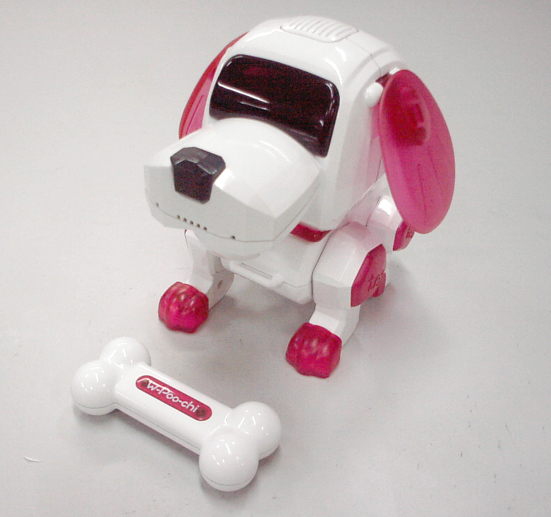
Likely released in 2001, Walking Poo-Chi is a walking version of Poo-Chi that was exclusive to Japan. Walking Poo-Chi can communicate with a Japanese Bot-Ster, another Walking Poo-Chi, a Japanese Super Poo-Chi, or a Dino-Chi, and he can speak Japanese. Tiger Electronics displayed a prototype Walking Poo-Chi at the 2001 New York Toy Fair, but Walking Poo-Chi was not released outside of Japan.
Walking Poo-Chi was only released in 2 color schemes.
AI Poo-Chi

AI Poo-Chi was an unreleased version of Poo-Chi with voice recognition, developed by Sega Toys in collaboration with the Massachusetts Institute of Technology. AI Poo-Chi is similar to Super Poo-Chi, as it responded to commands and could mature into one of three types of dogs, depending on how it was treated. It would grow into an obedient dog, a talented dog, or into a "stray" dog.
PC Poo-Chi
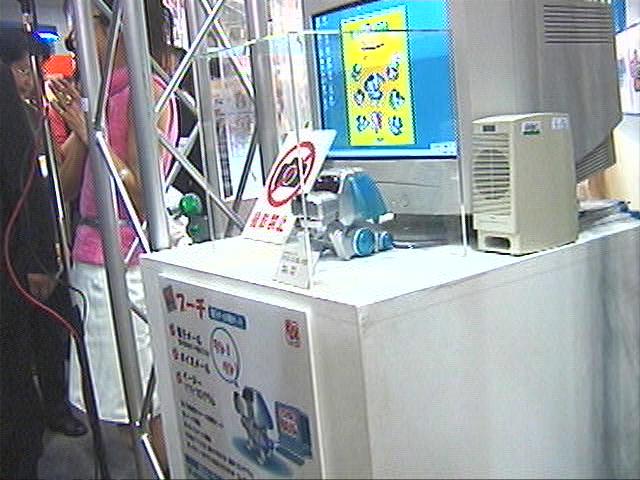
PC Poo-Chi was an unreleased version that could connect to your computer and had its own software. It could notify you about emails.
Prototypes
Prototypes here are not listed in the order in which they were created.
Prototype #1
The only difference I can clearly point out is, the prototype is missing two small holes on the front of its muzzle that the released one has.
In the first photo, Poo-Chi looks as if its ears and leg caps were edited to look very blue in this photo, and its eyes also look edited on. Despite the edits, the photo is official, as it was used in an advert.
I'm assuming the one in the second photo is the same prototype (or atleast the same type of prototype), as it is also missing two holes on the front of its muzzle. His ears have a darker shade of blue, but this could have been the result of some editing, since the prototype Meow-Chi's ears look saturated.
Prototype #2
.gif)
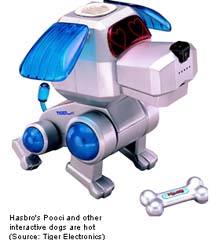
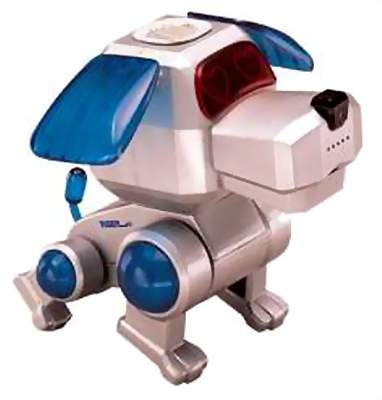
Has the same difference with its muzzle as prototype #1. However, the button on its head is white, and it's missing the handle on its chest. The logo in the 2000 Toy Fair catalog has a blue bone instead of a silver one. Aside from the blue and silver color scheme, it features a prototype in a pink and silver color scheme and another with a purple and silver color scheme, but they're likely edited images.
Trivia
- An ASCII article talking about Poo-Chi before it was released mentions Poo-Chi is equipped with 40KB of ROM and 128B of RAM, and can function for two weeks without the batteries being changed.
- The same article mentions Poo-Chi was the first product in the Partner 2000 Project (PARTNER2000プロジェクト). No other information about this project appears to have surfaced. This could have been a cancelled project idea or the name for the Kokorobo Series that got changed later.
- Haruhiko Kato, an actor, owned a Poo-Chi prior to the toy's release, and answered questions about Poo-Chi at the Tokyo Toy Show in March 2000. A Poo-Chi he designed was publicly displayed at the event, and according to the official Poo-Chi website, it could be seen on the website itself, but it's unknown which custom Poo-Chi in the gallery on their website was designed by the actor.
- Poo-Chi was planned to make an appearance in a horror film called Another Heaven. This doesn't seem to have happened, though??
- At the Tokyo Toy Show in 2000, a choir of 50 Poo-Chis was present.
- While 'Pooch' is a synonym for 'dog', Poo-Chi's name is meant to be like an acronym: 'P' for 'Partner', 'OO' meant to resemble the zeroes in '2000', 'C' for 'Communication', 'H' for 'Heartful', and 'I' for 'Interactive'.
- While the Robo-Chi line did not have many knockoffs known to exist, Poo-Chi appears to have more knockoffs than other Robo-Chi members.
- Poo-Chi has a lost manga and film, and there was consideration for a Poo-Chi TV show.
- According to a Getty Images photo description, in 2000, Vladmir Putin was gifted a Poo-Chi by Yoshiro Mori, the president of Japan at the time. However, some news sources, such as UPI, mention the dog was called 'Puti', it was capable of singing the Russian anthem and Troika (a folksong) after being pet on the head, Japanese officials did not know who manufactured the robot dog, and the article states the dog was like SONY's AIBO. I was thinking that maybe this was a customised version of Poo-Chi specifically made for Putin, but the line about Japanese officials not knowing who produced it is weird. Unless it was an obscure knockoff.
- Japanese Poo-Chis have the word 'one' on their leg caps, meaning, they are the first member of the Kokorobo Series.
- Some Poo-Chis were exclusively sold in Japan, while some color patterns sold by Tiger weren't available in Japan.
- There are four Christmas-themed Poo-Chis confirmed to exist; one was sold by Tiger, while three were sold by Sega Toys in Japan.
- A prototype translucent, yellow Poo-Chi with specks of glitter in its plastic exists.
We were robbed, guys... - Another alternative version of Poo-Chi's logo exists with a differently-shaped bone; as proof, it can be seen on the German Hasbro website.
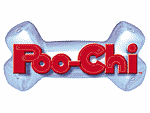
- Despite being manufactured by an OEM factory in Guangdong, the Poo-Chis that were sold in Beijing were Poo-Chis that were actually exported by the manufacturers, only to be imported back into China by an importer.
Videos
Sources
- The Old Robots Poo-Chi webpages (some photos came from here)
- ASCII article mentioning the sales of 10.16 million units sold
- Poo-Chi Patent (US7442107B1)
- Tiger Toys Poo-Chi webpage
- Italian article about Poo-Chi
- Mention of 100,000 units sold
- Ditto (but in English)
- Mention of 1 million units sold by Tiger "last year" (article published in 2001)
- Mention of Haruhiko Kato having a Poo-Chi
- Article mentioning Poo-Chi would make an appearance in Another Heaven
- Article mentioning Poo-Chi was sold in China
- Japanese article published on the 31st of July, 2000
- e-marketing.fr article
- The meaning of 'Poo-Chi'
- Tokyo Toy Fair Info
- Silver and Blue Poo-Chi with English box
- Blue Poo-Chi listing photos on Kleinanzeigen
- Sales in China and manufacturing information
- Fourth photo of prototype #2
The photos of the boxed Italian Poo-Chi and Korean Poo-Chi are from listings that were no longer up when this page was being worked on.

